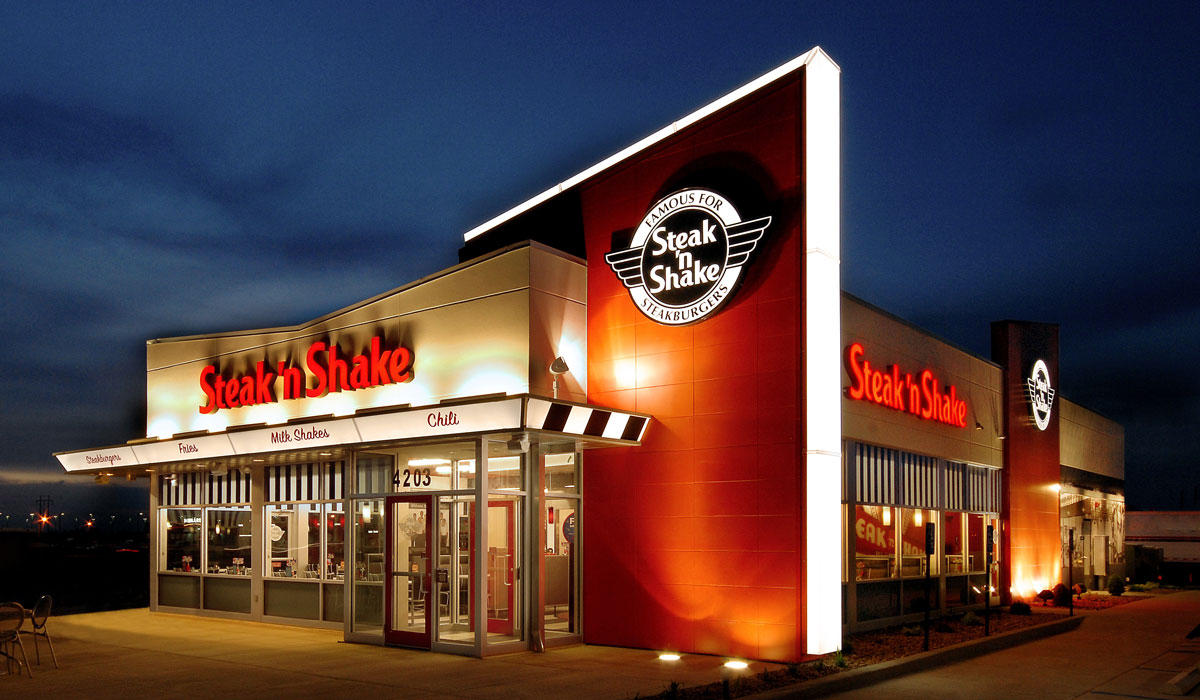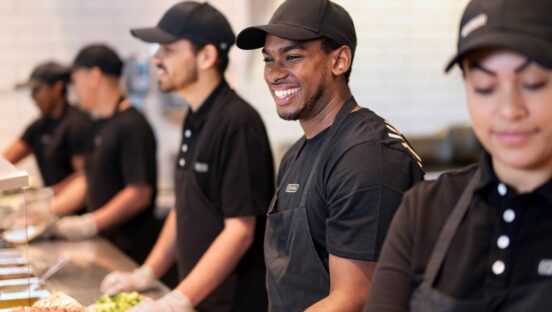Steak ‘n Shake emerged out of the Great Recession as one of the industry’s steadiest performers. After same-store sales plummeted 7.1 percent in 2008, the brand put together seven straight years of positive gains, including a 7.5 percent run in 2010 that stacked on a 4.1 percent increase the year before.
If you track back to when present management took over on August 5, 2008, Steak ‘n Shake was losing $100,000 per day. By the end of 2009, it was generating $100,000 per day, the company said. Over the next nine years, its aggregate pre-tax earnings were about $185 million and those earnings translated into an even greater sum of distributable cash.
Accelerate to the present, and the comeback story has lost its rosy undertone. Sardar Biglari, CEO of Biglari Holdings, wrote in a letter to shareholders, signed February 22: “The decade of control under current management ended much like it started—with heavy losses.”
Steak ‘n Shake’s same-store sales declined 5.1 percent in 2018, Biglari revealed. That marked three straight years of negative results following a 0.4 percent drop in 2016 and a 1.8 percent decline in 2017. Additionally, the number of customers has steadily fallen, going from 116 million to 111 million to 103 million—Steak ‘n Shake’s lowest in eight years. For the first time since 2008, restaurants took a loss in operating earnings at $25.8 (in dollars in 000s). As a company, the figure was negative $10,657. It was negative $30,754 in 2008 before trending positive year-over-year until 2018.
Steak ‘n Shake’s average-unit volumes have been on the decline, too. The company posted AUVs of $1,839.51 (in thousands) in 2017 and had total systemwide sales of $939.99 (in millions). The year before it reported AUVs of $1.9 million and systemwide sales of $1,027 (in millions).
“Ever since we took control of Steak n Shake, we have been steadfast in our formula for success: providing the highest quality burgers and shakes at the lowest possible profit per customer from an ever-increasing number of customers,” Biglari wrote.
Where did the 86-year-old, 600-unit (413 company-run) burger brand go wrong? Biglari says the company “erroneously” stayed with equipment and kitchen design that was ill-suited for volume production. What resulted was high-cost, labor-intensive slow service.
“We failed customers by not being fast and friendly,” he said.
Biglari said Steak ‘n Shake’s philosophy, borrowed from Henry Ford, of lower price, higher volume, fell flat since the company failed to implement Ford’s highly efficiently assembly line methods.
“To be a market leader in the fast food business, we should have paid greater heed to becoming, well, fast,” he wrote.
Biglari said Steak ‘n Shake is in the process of addressing the misstep. It’s overhauling and streamlining production by developing a “sophisticated operating and delivery system … in order to gain volume through speed.”
In the past decade, Steak ‘n Shake’s drive-thru and take-out revenue jumped 51.5 percent. The first 10 years were defined by an aggressive pricing formula. Now, the company is determined to implement advanced production techniques, Biglari said.
He noted that Steak ‘n Shake is “developing a tailor-made system designed to speed up service, deliver consistency, and reduce labor while safeguarding our customers’ love affair with the craftsmanship behind our handmade, homemade creations. Our aim is to change not our products but the process by which we create our delicious Steakburgers and milkshakes.”
“But there is a caveat: We are not interested in absentee owners; rather, we seek entrepreneurs with a consummate commitment to the business. In doing so, we aim to harness the power of enterprising operators,” Sardar Biglari on Steak ‘n Shake’s decision to franchise its whole system.
As Biglari alluded to before, Steak ‘n Shake’s issues extend beyond convenience. The brand’s customer service lagged as well. “No amount of technology or equipment will create a winning restaurant chain; it takes the right leadership in every restaurant unit,” he wrote.
Steak ‘n Shake hopes to take a page out of Chick-fil-A’s book to remedy the issue. Earlier in the year, the brand announced it was franchising all 413 of its company-operated units. Specifically, the initiative centered on a single-unit strategy—akin to the chicken leader—in hopes of fostering a system where every operator is fully invested. The owner-operator model sells franchises to managers and other interested parties for just $10,000. But the new operator must split the store’s profit with the franchisor. Again, like Chick-fil-A. Steak ‘n Shake also charges the restaurant up to 15 percent of sales to lease the unit and its equipment. This was an ambitious change from past practices. The average initial investment for a classic Steak ‘n Shake, which includes planning and building a location, runs between $1.6–$2.6 million. Biglari, who started his company with $15,000, said the program would feed the entrepreneurial spirit at Steak ‘n Shake.
Read more about the program here.
“But there is a caveat: We are not interested in absentee owners; rather, we seek entrepreneurs with a consummate commitment to the business. In doing so, we aim to harness the power of enterprising operators,” Biglari wrote.
Even splitting the profits along with the possible 15 percent of sales, Biglari said, franchise partners can earn “considerable sums” under this structure.
“Our thinking behind such a lucrative arrangement is simple: The best way to create wealth for ourselves is to first create wealth for our franchise partners,” he wrote.
The franchisees are being screened based on entrepreneurial attitude and ability, but become franchise partners based on achievement, he said. They need to demonstrate skills “embodying a customer-focused approach” and be hands-on operators.
“We limit a franchisee to a single location, based on the belief that focus, along with passion, determination, and persistence, will translate into excellent employee and customer satisfaction,” he said.
This new Steak ‘n Shake system could take about three years to transition. “We expect the combination to reinvent Steak n Shake as the best quick-serve restaurant company in the premium burger segment of the industry,” he wrote.
To accelerate the process, Steak ‘n Shake is now offering two franchise arrangements: the franchise partner model (the single-operator structure outlined above), and traditional franchisees, which is how the company plans to grow its unit count, Biglari wrote.
“To achieve unit growth without a major capital outlay, we employ a traditional franchise based model, a noncapital-intensive strategy that generates high-return, annuity-like cash flows,” he wrote. “Here, the major funding necessary to expand the brand is borne by third parties. Traditional franchising is a business that not only produces cash instead of consuming it but concomitantly reduces operating risk.”
Steak ‘n Shake’s franchise system has shifted before. Beginning in 2010, the company invested money to advance the traditional model. It had 71 franchise units in 2010 and 213 in 2019. The company, founded 1934 in Normal, Illinois, started franchising in 1939. It grew by an average of one franchise unit per year from 1939 to 2010. In the past eight years, current management added twice the number of franchise units (142) than had been built in the preceding 71 years.
In regards to the service model, all Steak ‘n Shakes were sit-down chains for the first 78 years. In 2012, the company introduced a quick-service format, “designing and developing our concepts in a modular way that embraced flexibility and made it adaptable to various venues,” Biglari wrote.
This has allowed it to scale in universities, casinos, airports, gas stations, shopping centers, and other non-traditional outlets. Currently, 87 of the franchised units are counter-service only—a figure that includes international operations, which began in 2013. There are 22 locations in France.
Transitioning to a franchise model makes sense dollars wise, Biglari said.
“For the period 2011 through 2015, the franchise business operated at a loss but intrinsic value advanced,” Biglari wrote. “We allocated capital to develop the franchising business with the expectation of creating greater dollar value for each dollar spent. Our traditional franchise business—domestic and international combined—is now a prodigious cash generator. In 2018, franchise operations posted a record profit of $8.0 million. Furthermore, because international operations reached scale toward the end of 2018, thereby turning the flow of red ink to black, we expect our franchise business to generate even higher profits in 2019.”








